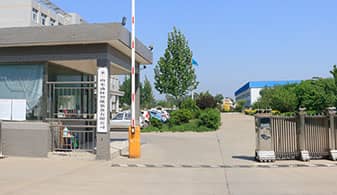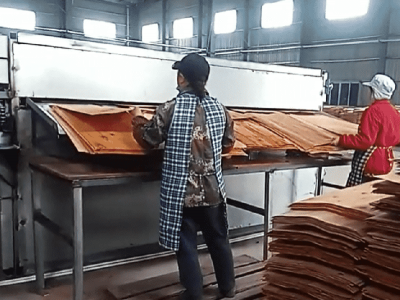How Precision Drying Technology is Safeguarding the World's Most Precious Woods
In the high-stakes world of luxury furniture, architectural marvels, and bespoke musical instruments, the journey from raw log to finished masterpiece is fraught with peril. Nowhere is this more critical than in the kiln, where the choice of a veneer dryer can mean the difference between a flawless, billion-dollar inventory and a pile of kindling.
FOREST PRODUCTS INTERNATIONAL – The global market for exotic and high-value timber is a realm where aesthetics, rarity, and physics collide. Woods like centuries-old Brazilian Rosewood, richly figured African Bubinga, iridescent Macassar Ebony, and ancient Kauri wood salvaged from New Zealand swamps can command prices exceeding $100 per board foot. For manufacturers and wood veneer producers handling these materials, the margin for error is virtually zero.
The most advanced saws and most skilled artisans are rendered irrelevant if the fundamental process of removing moisture is mishandled. Consequently, the selection and operation of the industrial veneer dryer have moved from a background utility to a central, strategic imperative, dictating both economic viability and artistic integrity.
The Inherent Vulnerability of Premium Wood Veneer
Wood veneer, the thin slices of wood typically glued onto core panels, is particularly susceptible to the stresses of drying. While solid lumber has mass to absorb some internal stress, veneer, often less than 1 mm thick, has no such luxury.
"Think of a priceless, figured wood veneer sheet as a complex, organic mosaic of different cell structures and grain patterns," explains Dr. Aris Thorne, a materials scientist at the Global Timber Institute. "When you introduce heat and airflow, these different elements want to shrink and move at different rates. Without exquisitely precise control, you don't just get warping; you get catastrophic checking, honeycombing, and cell collapse. The very characteristics that make the wood valuable—its unique figure and color—are the first things destroyed by improper drying technology."
The financial implications are staggering. A single load in an industrial veneer dryer can contain hundreds of thousands of dollars' worth of material. A miscalculation in humidity or a spike in temperature doesn't just degrade the product; it can annihilate its entire value, transforming potential heirlooms into industrial waste.
The Evolution of Drying Technology: From Artisan Guesswork to Digital Precision
The history of wood drying is one of gradual refinement. Traditional steam-heated kilns, while effective for construction-grade lumber, are blunt instruments for delicate species. Their inherent fluctuations in temperature and humidity can wreak havoc on unstable cells.
The modern era of drying technology for high-value woods is defined by one principle: algorithmic control over the entire moisture-removal curve.
1. The High-Frequency/Vacuum Dryer: Speed and Gentleness
For the most sensitive species, High-Frequency/Vacuum drying has emerged as a gold standard. This advanced veneer dryer technology uses high-frequency radio waves to generate heat uniformly within the wood itself, rather than relying solely on external heat conduction. This is combined with a vacuum chamber that lowers the boiling point of water.
"The vacuum is the game-changer," says Lena Petrova, CEO of Precision Dry Systems, a leading manufacturer. "By reducing the atmospheric pressure, we can dry wood effectively at temperatures as low as 30-40°C (86-104°F), rather than the 70-80°C (158-176°F) required by conventional kilns. This low-temperature environment is infinitely gentler on the lignin and cellulose structures, preserving the wood's natural color and mechanical strength. For a wood veneer that is all about surface appearance, this is non-negotiable."
2. The Hybrid Jet Dryer: The Workhorse for High-Volume Quality
Another dominant force in the field is the hybrid jet dryer, which combines convective heat with high-velocity, laminar airflow. These systems are marvels of engineering, designed to apply heat evenly across every square inch of a wood veneer sheet while simultaneously using the force of the air to restrain the wood and prevent it from curling or distorting during its most vulnerable, plastic state.
Modern iterations are equipped with hundreds of sensors monitoring moisture content in real-time, not just of the chamber, but of sample strips within the load itself. This data feeds back into a central processor that automatically adjusts temperature, humidity, and airflow dozens of times per hour.
"This is where drying technology transitions from a manual process to a managed ecosystem," notes Kenji Tanaka, a production manager at a famed Japanese veneer company. "Our dryer doesn't just follow a preset schedule. It 'listens' to the wood. If it detects that the moisture is not exiting evenly, it can initiate a conditioning phase—introducing a burst of steam—to relax the outer fibers and allow the internal moisture to migrate out without causing stress cracks. This level of finesse is what allows us to consistently dry fragile Hawaiian Koa and highly figured Maple."
The Critical Decision Matrix: Selecting the Right Veneer Dryer
For a company investing in a new veneer dryer, the decision is a complex calculus of cost, capacity, and species portfolio.
Factor 1: Throughput vs. Delicacy
A High-Frequency/Vacuum dryer offers unparalleled quality but has a smaller chamber size and longer cycle times, making it ideal for boutique operations handling the absolute pinnacle of materials. A high-capacity hybrid jet dryer, while still extremely precise, offers greater volume and speed, suiting larger mills that need to process substantial quantities of high-value wood veneer like Mahogany or Walnut for the automotive and luxury interior markets.
Factor 2: Energy Efficiency and Sustainability
The latest drying technology is also being judged on its environmental footprint. Advanced heat-recovery systems, which capture waste heat from the exhaust to pre-heat incoming air, are becoming standard. Solar-assisted kilns are even being piloted in sun-rich regions. "Efficiency isn't just about saving money on power," Dr. Thorne adds. "It's about corporate responsibility. The woods we use are precious; it is our duty to process them with the least possible environmental impact."
Factor 3: The Data and Control System
The "brain" of the veneer dryer is perhaps its most critical component. Top-tier systems now offer cloud-based monitoring, allowing engineers to track a drying cycle from anywhere in the world. They store thousands of proven drying schedules for hundreds of wood species, which can be fine-tuned and saved as proprietary intellectual property.
"We don't just sell a machine; we sell a library of knowledge," Petrova states. "A client drying a rare batch of Burmese Teak can access a baseline schedule from our global database, which their engineers can then adapt. This collective intelligence dramatically de-risks the process."
Case Study: The Resurrection of the American Chestnut
The power of modern drying technology is not limited to existing exotic species. It is also key to revitalizing the lost ones. With the nascent return of the American Chestnut through blight-resistant hybrids, researchers are using precision dryers to establish optimal processing parameters for a wood that has been largely absent from commerce for a century.
"These new-old woods are an unknown quantity," says Dr. Thorne, whose institute is involved in the research. "We are using diagnostic veneer dryer systems to understand their specific gravity, shrinkage coefficients, and susceptibility to collapse. The data we gather will be foundational for the next generation of woodworkers seeking to use this legendary timber."
The Future of Drying Technology: AI and Predictive Analytics
The next frontier for veneer dryer systems lies in artificial intelligence and machine learning. Prototype systems are already being tested that use optical scanners to analyze the grain pattern and density of each wood veneer sheet as it enters the dryer.
"Imagine a system that doesn't just run a 'Walnut' schedule," envisions Tanaka. "It runs a custom schedule for this specific sheet of Walnut, based on its unique grain structure. The AI can predict stress points and pre-emptively adjust airflow and humidity in specific zones of the dryer to compensate. This is hyper-personalized drying technology, and it will take quality to a level we can currently only imagine."
Conclusion: An Indispensable Guardian of Value
Ultimately, the sophisticated veneer dryer is more than just a piece of factory equipment. It is the indispensable guardian of natural capital and human craftsmanship. As the supply of the world's most magnificent trees becomes ever more constrained, the ability to transform them into enduring objects of beauty and function without loss becomes paramount.
The choice of a veneer dryer is, therefore, a definitive statement of a company's philosophy. It is a commitment to respecting the material, embracing science, and ensuring that the inherent value locked within a precious log is not carelessly evaporated, but rather meticulously and respectfully unveiled. In the silent, humidified chamber of a modern dryer, the future of luxury woodworking is being carefully and precisely shaped.






